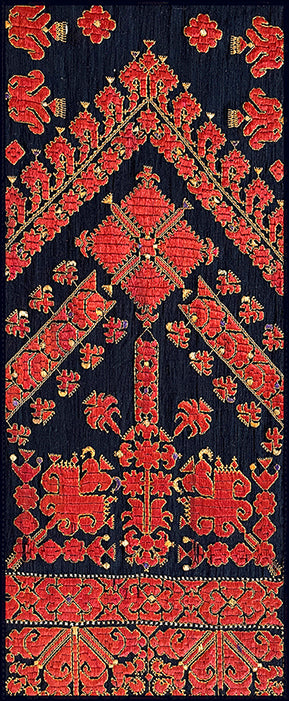Your Cart is Empty
Menu

Guide 105 - The Construction of the Material
February 27, 2019 2 min read
The construction of the artwork / material of the artwork offers the most clues about the age of the artifact.
***
There are many cosmetic superficial aspects of any artwork that could be reproduced or faked even in current times - but the craft within, requires skill and knowledge in order to replicate it. Therefore examining the construction is an important step in assessing an artwork.
***
So what shall we look for?
***
Let me speak of Textiles.
***
The first thing to look at is the yarn. Is it organic yarn or synthetic. Synthetic yarns did not gain popularity until the mid 1900s but such yarns such as viscose have been around since the early 1900s. So while the commonly used fabric in small Asian communities has been organic-fibre based, now and then it is possible to see an old piece that has some synthetic yarn in it.
***
Next we look at whether it was handspun or machine spun. In the case of handspun yarn there is a distinct presence of slubs or uneven lumping of the material on the thread. If this is present then it is 'most probably' handspun material. (I say most likely because I now hear that in the recent times, some throw in a few slubs just to gain the now-elitist status of handspun and fetch higher prices).
***
Next we look at whether it was woven on manually operated looms - handlooms / foot looms / back strap looms - or whether it was woven on mechanised power looms. This is harder to discern by just looking at the end product as manual loomed work can be as perfect and precise as machine loomed work.
***
In the case of weavings created for self- usage - which is the case for most tribal / folk textiles - more often than not, perfection and precision are missing - so the textile is never perfectly symmetrical or perfectly balanced. That usually indicates that this was not commercially made.
***
Note that commercially made textiles could also be handmade and will have a higher degree of perfection in them.
***
Then, if it has embroidery, it could be done by hand, or by machine or be completely digitised. The digitised ones are easy to spot as it will have uniform work all over. Handmade embroideries on the other hand will always have some feature in some spot that allow the soul of the individual maker to shine through - a mistake, an incomplete patch, the use of a different thread or some idiosyncratic variation. Some see these as 'flaws' - in my view it is quite the opposite - to me these are confirmations of the 'soul' that I am seeking in any textile.
***
It is important to note that not all arts have vanished .... so this is most useful in dating those categories that are now no longer made. There are many others where the skills are alive and thriving and then there are others which are going through a slow but certain revival.
***
Also in Notes

Guide 103 - Condition of the Artwork
February 25, 2019 2 min read
Guideline for Assessing Condition of an Antique Artwork

Enjoying the Visual Feast?
Join our Art-Lovers community
to receive invitations to Art Talks & Flash Sales

